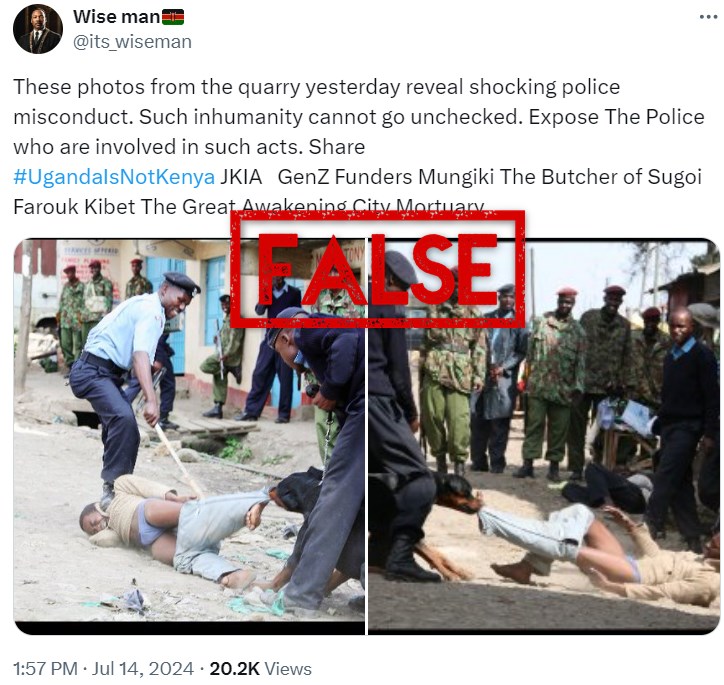For over a month now, Kenya has been experiencing anti-government protests that human rights groups say have been met with excessive force by police. In the midst of this political crisis, a series of images have surfaced online that appear to show police beating a man. However, the images in question have nothing to do with the recent protests or the discovery of bodies in a quarry. They show a 2006 police operation targeting members of the banned Mungiki sect in Mathare, an informal settlement in Nairobi.
“These photos from yesterday’s quarry reveal shocking police misconduct,” reads the caption on a post shared on X on July 14, 2023.
The post contains two images showing police beating a man with a baton while he lies on the ground and a dog biting his pants.
The images have also been shared thousands of times elsewhere on the X platform, such as here And here.
Kenyan protests
The recent demonstrations in Kenya initially began as a reaction to a proposed tax hike bill, but has since grown into a broader expression of discontent with the president Willem Ruto‘s government (archived here).
According to human rights groups, the protests that began on June 18, 2024, have left at least 50 people dead and more than 400 injured.
On June 25, 2024, after protesters stormed parliament, Ruto dropped the proposed tax increases. But protesters are now demanding his resignation and are angry at the violent suppression of the demonstrations by the police.
On the same day that protesters stormed parliament, social media was abuzz with rumors of a alleged massacre of civilians by police in Githurai, a residential area northeast of central Nairobi. Unverified reports suggested that several people were killed by police during the incident overnight (archived here).
The discovery of nine bodies in an abandoned quarry near Nairobi in early July drew connections to the so-called “Githurai Massacre,” although police later linked the human remains to an alleged serial killer currently in custody (archived here).
However, the images shared on social media have nothing to do with the victims of the quarrying and the ongoing protests against the government in Kenya.
Sect repression
Using a reverse image searchAFP Fact Check found that the two images were shared by activist Boniface Mwangi on his website. X account more than a decade ago (archived here).
Mwangi told AFP Fact Check he took the photos in 2007 in Nairobi’s Mathare informal settlement during a “police operation against the supporters of the Mungiki sect”.
Mwangi is a photojournalist who is also deeply involved in political activism.
In 2007, he took photos for The Standard newspaper. Mwangi shared more photos of the incident with AFP Fact Check that were not published at the time.
The Outlaws Mungiki sect consisted mainly of young people from Kenya’s largest tribe, the Kikuyu (archived hereThe shadowy religious group claimed historical ties to the Mau Mau uprising, which was banned in the early 2000s after its members were linked to violent crimes.

